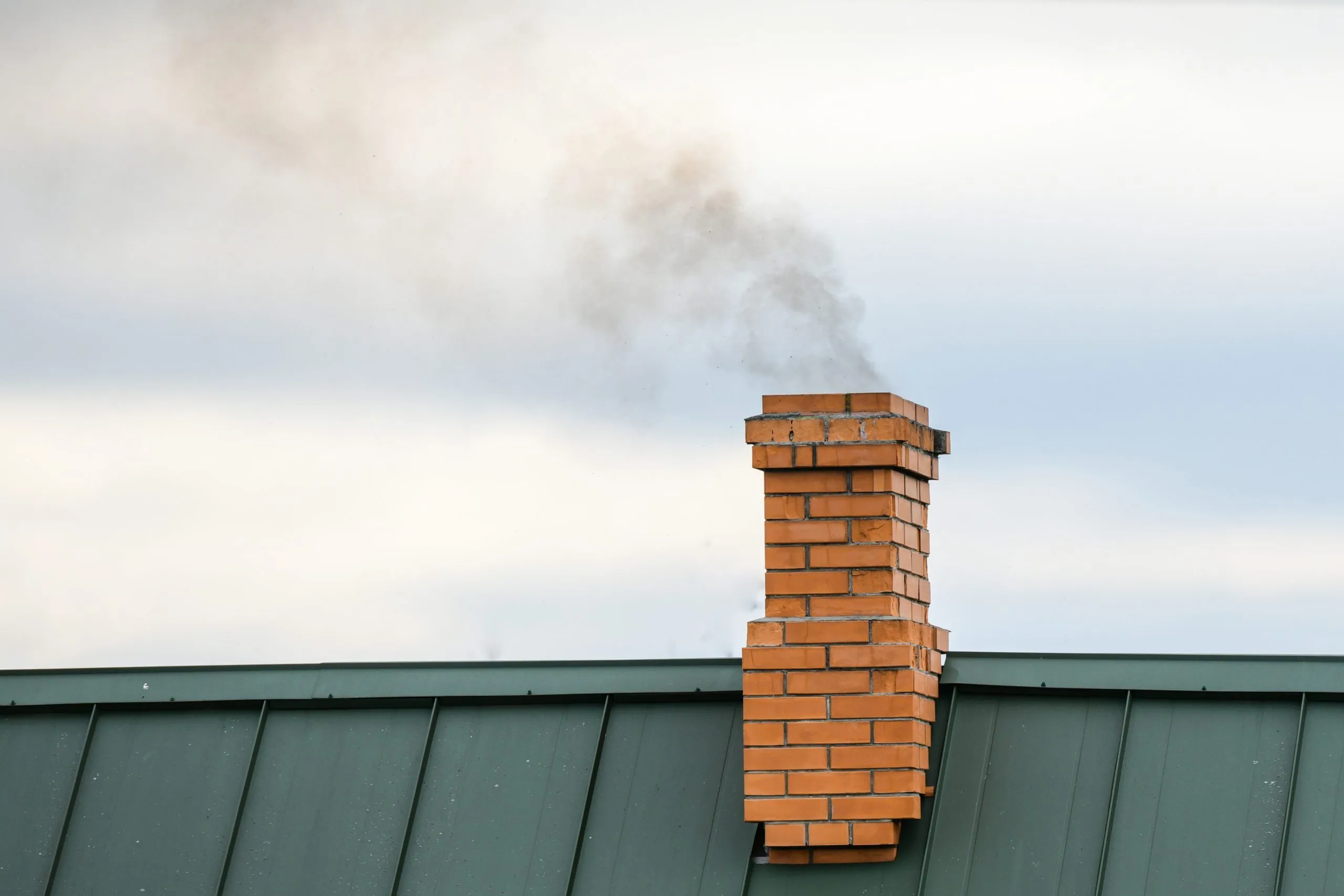Creosote is a term that every New Hampshire and Rhode Island homeowner with a fireplace or wood stove should be familiar with. This tar-like substance is not just a byproduct of wood burning; it’s a potential hazard lurking within the chimney. Understanding the formation and risks of creosote buildup and knowing when to call for chimney sweeping in RI and NH is essential for maintaining a safe and efficient heating system in your home.
How Creosote Builds Up
Creosote forms when the wood is burned at low temperatures, causing incomplete combustion of the wood fibres. This process produces a lot of smoke, which cools and condenses on the inner surfaces of the chimney flue as it escapes to the outside. Creosote buildup can occur in three stages: a flaky soot that can be brushed away easily, a tar-like coating that can be scraped off, and a glossy, hardened glaze that is much more difficult to remove. The accumulation rate can be influenced by the type of wood used, the burning practices, and the configuration and temperature of the chimney itself.
The Risks Associated with Creosote Accumulation
Creosote is highly combustible. It can ignite when it builds up to sufficient thickness, causing a dangerous chimney fire. These fires can burn explosively, are noisy, and are dramatic enough to be detected by neighbors or passersby. More insidiously, creosote can cause fires that burn slowly and silently, spreading to the house’s structure and posing serious risks to the home and its occupants.
Beyond fire hazards, creosote buildup can also degrade air quality inside the home. If the chimney is not adequately venting due to a creosote blockage, harmful fumes, including carbon monoxide, can back up into the house. Moreover, creosote can corrode the chimney liner, masonry, and metal, leading to costly repairs.
Identifying Creosote Buildup
Knowing how to spot creosote buildup is crucial. Homeowners can look for several indicators:
- Visual Signs: A thick, tarry substance inside the chimney or flue liner or shiny, hardened layers on the chimney’s walls are clear signs of creosote.
- Smell: A strong, acrid odor emanating from the fireplace, even when it is not in use, can indicate creosote.
- Performance Issues: A poorly performing fireplace that produces a lot of smoke or doesn’t seem to draw as well as it used to can also be a symptom of creosote buildup.
Preventing Creosote Buildup
The best strategy to combat creosote buildup is prevention:
- Proper Burning Practices: Use only dry, well-seasoned wood, which burns hotter and cleaner. Avoid burning softwoods in high quantities, as they produce more creosote.
- Maintaining Airflow: Ensure that the fireplace or wood stove receives sufficient air, which helps maintain high combustion temperatures and reduces creosote formation.
- Regular Inspections and Cleaning: Schedule an annual inspection and cleaning of your chimney by a professional. This removes creosote and checks for other issues like structural damage or blockages.
Safe Removal of Creosote
Removing creosote is not a DIY job. It requires professional tools and expertise, especially when dealing with the more dangerous third-degree buildup. As a New Hampshire homeowner, a certified chimney sweep NH residents trust is your best bet to effectively remove creosote, as these professionals have the tools and expertise to employ methods like chemical treatments or mechanical brushing. Different tools such as rotary loops, flat wire brushes, or chemical cleaners might be used depending on the creosote’s stage. Ideally, chimney cleaning should be done in late summer or early fall to ensure that the chimney is safe and efficient for use when needed.
Hiring Certified Chimney Sweeps
Ensuring the safety of your chimney requires the skills of a certified chimney sweep. These professionals are trained to deal with all chimney maintenance and repair types, including creosote removal.
- Certification Importance: Look for a chimney sweep certified by the Chimney Safety Institute of America (CSIA), which ensures they have the necessary training and adhere to professional standards.
- Finding a Sweep: Use resources like the CSIA’s website to find a qualified chimney sweep. To access chimney sweeping in RI or New Hampshire, you can also run a quick online search.
- Selection Tips: Choose a chimney sweep NH or Rhode Island homeowners trust with good reviews and transparent pricing. A trustworthy professional should offer a detailed inspection report and clearly explain any necessary work.



